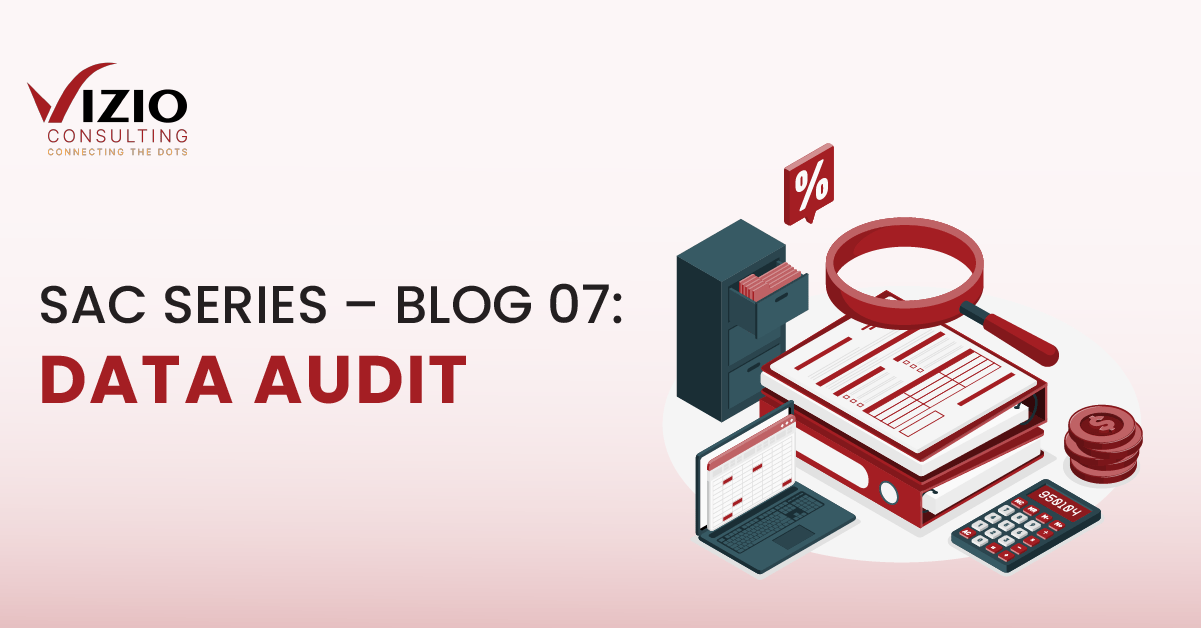BY SAJJAD HASSAN & ABDUR REHMAN
Welcome to VIZIO’s blog series on SAP Analytics Cloud (SAC). This series will include explanations on the various functionalities, tools, features, and methodologies, which are at the disposal of SAC application developers.
In this episode, we will be talking about one of the vital SAC security tools for planning: Data Audit
Intro
Changes to transactional data are sensitive and the user would feel more comfortable if those changes could somehow be tracked. This is where SAP Analytics Cloud (SAC) provides its ‘Data Audit’ feature for better data security.
Data Audit feature allows the planner to log changes to the transactional data in the model and to then report on those data changes. The activation of this feature, logs changes made to the public data. If there are changes to transaction data which were made before the activation of Data Audit feature.
Data Audit feature is activated in the model preferences as shown below (Fig 1.01).

Fig 1.01 – Activating Data Audit
Data Audit Report
Changes made to the transactional data in the model in logged in the form of a data audit report. This report provides many details (Fig 1.02) related to the data changes including:
- Audit Time, User & Action
- Model Dimensions
- Signed Data (old, new, delta)

Fig 1.02 – Data Audit Report
To access the data changes, go to Navigation Bar -> Security -> Data Changes (Fig 1.02).

Fig 1.03 – Access Data Changes
The data report can be generated by following the steps below:
- Select the model in which transactional data changes are to be tracked
- Change and filter columns as per requirement
- Download the log to excel
- Delete data (all, specified or based on age)
Signed Data:
The changes made to the transactional data in the model is categorized into 3 categories of signed data within the Data Audit Report:
1.Signed Data Old – Transactional Data before the change was made
2.Signed Data New – Transactional Data after the change was made
3.Signed Data Delta – The difference between Signed Data Old & Signed Data New
Case Study – Add value in a blank (unbooked) cell:
The requirement is to add an inflation rate (let’s say 1%) in a blank cell. The changes will be logged as follows:

Fig 1.04 – Case Study: Add value in a blank cell
The data audit report shows a value of 1 in the ‘New’ & ‘Delta’ columns of signed data since there was no data before as reflected in the blank column of ‘Old’ signed data. Since a new value was added to a blank cell, the audit report categorizes it as a ‘New’ audit action as shown in (Fig 1.04).
Case Study – Change value in a booked cell:
The requirement is to change the inflation rate (let’s say from 1% to 3%) in a booked cell. The changes will be logged as follows:

Fig 1.05 – Case Study: Change value in a booked cell
The data audit report shows a value of 1 in the ‘Old’ signed data column which was the original value. The change to 3% in the inflation rate is reflected in the ‘New’ signed data column. The ‘Delta’ signed data column reflects the difference between the old and new values. Since there was a change to the original booked data, the audit report recognizes it as a ‘Modify’ audit action as shown in the figure above (Fig 1.05).
Reach out to our SAC experts for Consulting & End User Training Programs.

